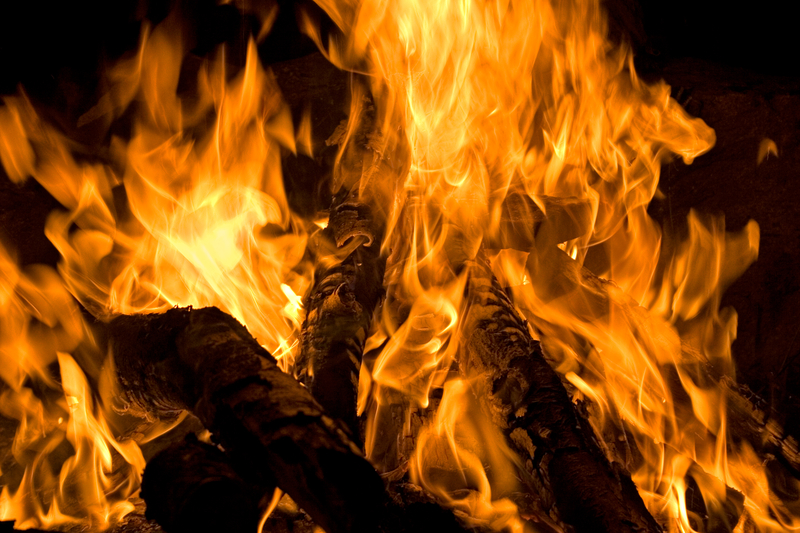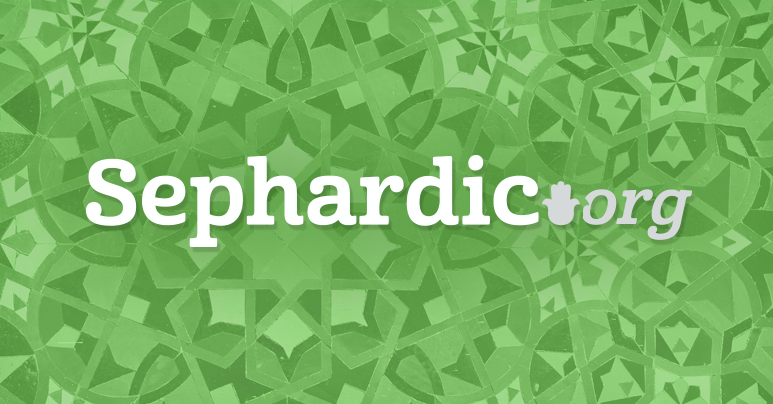
The Korbanot and the Study of Torah
Our Sages have found it essential to compare and contrast the sacrificial ritual with that of Torah study. They are justifiably comparable in that both are fundamental instruments in redeeming and elevating holiness from the lower three worlds to the highest spiritual world of Asilut. They equally share an essential rule in that what is being elevated from the lower levels must be integrated into the highest fourth level. Based on a narrative in Menahot we will assert that holiness elevated through the learning of Torah can be considered superior to the sparks elevated via sacrifice. Furthermore it might even be possible to conclude that the learning of Torah alone - can elevate sparks that are associated with the sacrificial ritual in addition of course to the holiness elevated by the intrinsic study of Torah itself.
Raising Holiness from the Three Lower Levels Up to the Fourth
The principal purpose of the sacrificial ritual is to elevate sparks of holiness that have become entrapped in the three lower spiritual worlds of בריאה יצירה ועשיה - back to their origins in the highest world of Asilut. The lower three have a parallel in the delineated biological kingdoms - the inanimate, vegetable and animal kingdoms.
The ritual includes aspects from all three levels - as sacrifices are accompanied by Salt (inanimate - associated with Asiya); Wine, Flour, Oil, Levona (vegetable - associated with Yesira); Animals,Birds (living - associated with Beriah) - These are elevated to and via the repentant mind of the donator or the holy meditative thoughts of the participating kohen - (associated with Asilut).
We know that there are also four levels in the study of Torah which are parallel to the four worlds. These are found in the acrostic פרדס - They are פשט רמז דרש - which are associated with the lower three worlds and סוד - the Torah secrets associated with the elevated level of Asilut. Here too - there must be a similar intent to elevate one's learning in the revealed portions with that of the esoteric portion of the Torah. The Ramhal writes that the true extent and significance of the revealed Torah (the three lower levels) can only be recognized and discerned by the way of the secrets.
R. Yosef Hayyim notes that man must exert himself in all areas of Torah, the revealed (the lower three) and the esoteric (the highest level) in a manner that there remain no contradictions between them. Hakham Ovadya cites R. Hayyim Vital in that one is obligated to exert himself in all four areas of Torah to the best of his abilities in order not to incur reincarnation. R. S. Donn cites a verse in our portion (1:8) that unites the sacrificial ritual with that of learning Torah in that both require elevating their respective lower three levels to that of the highest. The sons of Aaron arranged את הראש - the head and את הפדר - the fats ... the head and fats are listed exclusive to the rest of the korban. It is the סוד or secrets of the Torah which is hinted here when mentioning the term ראש or head - while the fats are termed פדר - hinting to the acrostic of the three lower forms of Torah learning or פשט רמז דרש - The Gaon of Vilna asserts that one cannot fully comprehend them without learning and understanding the Torah secrets.
R. Bahya notes that the expression פדר - is a translation of פרד - a separation. These fats or lower levels of learning are arranged to cover the area where the head or the secrets have been slaughtered or exposed. So what the Torah is teaching on the verse of sacrifices is that the secrets or the highest of the four levels must be arranged next to the three lower levels. Thereby arranging the סוד next to פדר to complete the פרדס - If one is negligent to attach the head by learning and integrating the Torah secrets with that of the revealed Torah - the Sages consider him a Mule or a פרד - The Hida and R. Y. Fataya expound on a verse in Tehillim 32:9 and warn "Be not like a Mule a פרד - who does not join the lower levels of learning with the highest the סוד - and remain like one without understanding".
Can Study of the Torah Supercede the Bringing of a Sacrifice?
The answer to this question can be found in a narrative found in the Talmud (Menahot 110) expounding on the verse 7:37 - זאת התורה לעולה למנחה ולחטאת ולאשם - To this ריש לקיש claims that when one learns Torah it is as if he is offering an Olah a Minha etc.. רבא retorts - If the verse is simply telling us that studying Torah is merely as if one brought these offerings - then the ל prefix is unnecessary and the verse could have been written - "This is the Torah - The olah minha etc.." rather asserts רבא - that the ל prefix forces us to read that Torah is "instead of" an Olah "instead of" a Minha..
So whoever engages in Torah study does not need the benefits of these offerings as his learning will better accomplish the task. In order to properly understand the narrative with the accompanying views we need to cite a teaching from R. HaAri. He writes (SG 11) - It is obligatory for one to fulfill all 613 misvot in three ways - Action, Speech and Thought as it is written 7:37 This is the Torah.. quoting Rish Lakish - whoever engages in Torah study it is כאילו הקריב - it is as if he offers an olah.
This apparently conforms with the approach of Rish Lakish that כאילו הקריב - is not an expression affirming that learning relieves one of his obligation to bring a korban - rather it fulfills the requirement to complete the Misva on the levels of speech and thought. Learning is necessary - but Rish Lakish denies its efficacy in replacing the physical korban offering. He admits though to its higher spiritual rectification (speech - thought) of learning Torah.
Rava asserts that the advantages of studying the passages concerning an offering are superior to physically bringing the sacrifice. R. HaAri teaches that the learning of Torah has a power pack in all four celestial worlds. While proper offerings elevate sparks from the three lower worlds upwards - the roots of (animal) sacrifice are nevertheless sourced - via a power pack in the lowest world.
Our Rabbi's teach that the numerical value of בהמה - animal is 52 which is associated with the lowest expanded divine name associated with the lowest world of Asiyah. Rava teaches - The learning of Torah is לעולה - instead of and to replace the bringing of an Olah. Once he ascends to complete the Tikun of speech and thought of the offering by Torah learning - it relieves him to some extent in bringing a korban! The advantages of studying the passages not only exceed the offering - but have the ability to rectify even the physical requirement which has been left undone. R.Y.M. Kagan expounds on Rava and notes that during the Temple era - the study couldn't exempt one from bringing an offering as the time necessitated it be fulfilled physically.
However, in our time when it is not possible to be fulfilled physically the rectification via Torah study is actually superior. Maybe this is so since the Talmud (Men 110 - Hag 12) teaches that the celestial temple still exists - and via the dedication of the true scholars in Torah study - the Kohen Gadol Micha'el takes the souls of these righteous ones - and offers them on the holy altar.
Expounding the Verse on Sacrifices in Terms of Learning Torah
According to the Ohr HaHayyim - The Torah reveals these marvelous properties we mentioned above - זאת התורה - This is the Torah - is an introduction to its powers. לעולה - by its means we can elevate holy sparks and souls - למנחה - to a place of repose - the spiritual place of the Divine Presence - לחטאת ולאשם - these are referencing two places the sparks had descended - both before and after the sin of adam respectively. Those which descended at the time known as תהו ובהו - are referred to here as the Torah of the sin offering, whereas the sparks which descended into the lower realms after the sin of Adam are referred to as the Torah of the guilt offering.
The Torah informs us of this division to help us locate, identify and rescue the sparks from their exile. למלואים - to bring them back to fill their original exalted spiritual place. ולזבח - this will enable the learner to slaughter the evil source who had hold of the sparks - השלמים - then the stage of perfection will have been reached. Hence the Talmud (Kid 30) quotes the Creator -" I have created the evil urge within you - (who tries valiantly to retain the holy sparks) I also have given you the Torah as a remedy to overcome it".
Learning in Place of or Instead of the Korbanot
Our Sages have instituted the we learn the Mishnayot associated with the Korbanot each morning. After reading the קרבן תמיד at the start of שחרית we find our verse reminding us of the spiritual power of learning Torah - especially the study of the order of the korbanot - זאת התורה לעולה - we then are prepared to learn about the sacrifices איזהו מקומן - in order to rectify the speech and thought aspects of this Misva.
According to ריש לקיש this represents an elevated level of Tikun associated with the bringing of korbanot. According to רבא - through the learning we can even elevate the sparks associated with the physical korbanot themselves. All the while necessitating our commitment to study the Torah on all levels in order to sanctify the sparks and elevate back to their source above.








